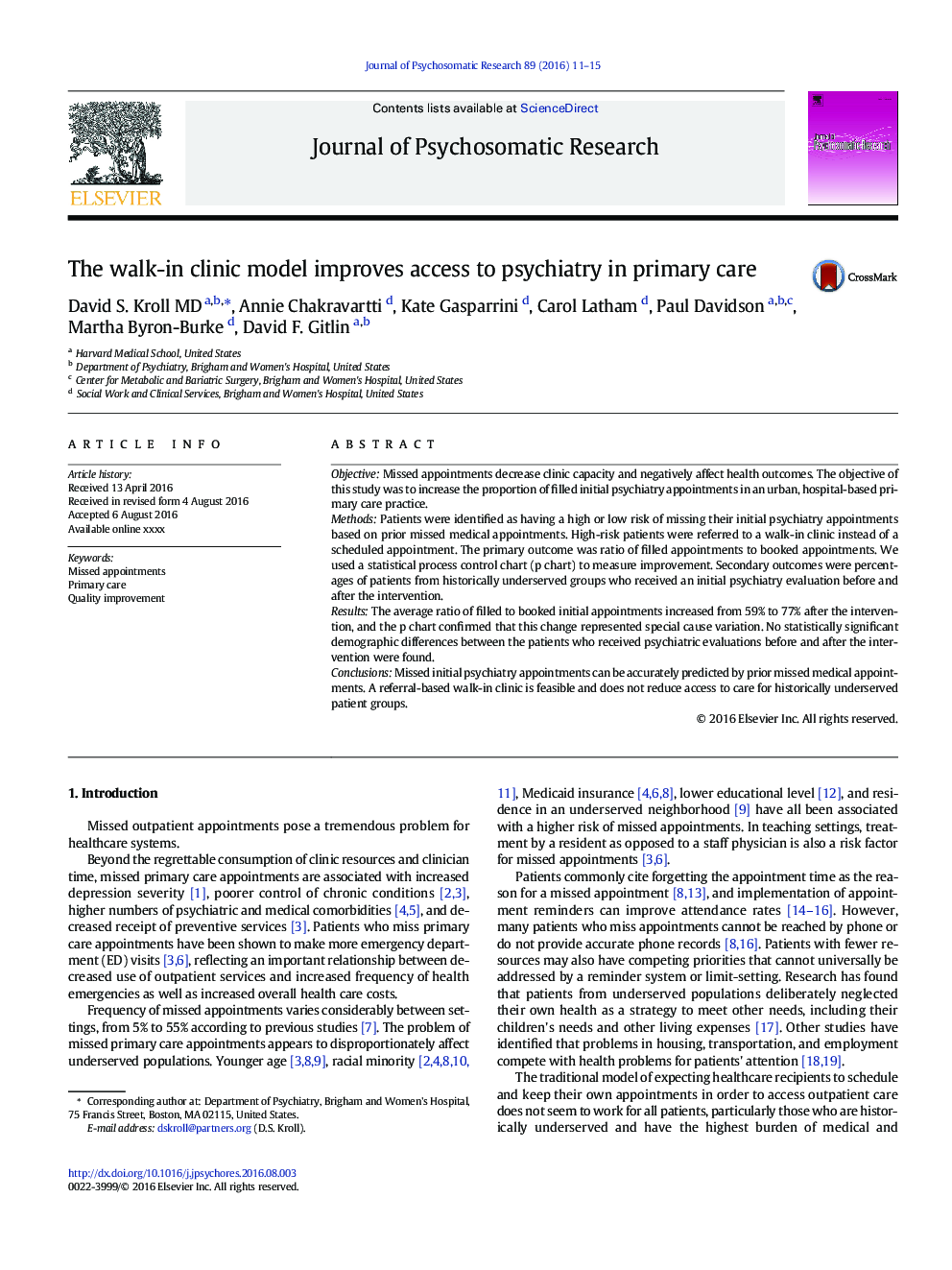| کد مقاله | کد نشریه | سال انتشار | مقاله انگلیسی | نسخه تمام متن |
|---|---|---|---|---|
| 949090 | 1475906 | 2016 | 5 صفحه PDF | دانلود رایگان |
• Missed initial psychiatry appointments can be accurately predicted by prior missed medical appointments.
• Patients from historically underserved groups are more likely to miss an initial psychiatry appointment.
• Accepting walk-in visits for initial psychiatry evaluations is feasible.
• The walk-in clinic model increases access to care for a greater volume of patients.
ObjectiveMissed appointments decrease clinic capacity and negatively affect health outcomes. The objective of this study was to increase the proportion of filled initial psychiatry appointments in an urban, hospital-based primary care practice.MethodsPatients were identified as having a high or low risk of missing their initial psychiatry appointments based on prior missed medical appointments. High-risk patients were referred to a walk-in clinic instead of a scheduled appointment. The primary outcome was ratio of filled appointments to booked appointments. We used a statistical process control chart (p chart) to measure improvement. Secondary outcomes were percentages of patients from historically underserved groups who received an initial psychiatry evaluation before and after the intervention.ResultsThe average ratio of filled to booked initial appointments increased from 59% to 77% after the intervention, and the p chart confirmed that this change represented special cause variation. No statistically significant demographic differences between the patients who received psychiatric evaluations before and after the intervention were found.ConclusionsMissed initial psychiatry appointments can be accurately predicted by prior missed medical appointments. A referral-based walk-in clinic is feasible and does not reduce access to care for historically underserved patient groups.
Journal: Journal of Psychosomatic Research - Volume 89, October 2016, Pages 11–15
